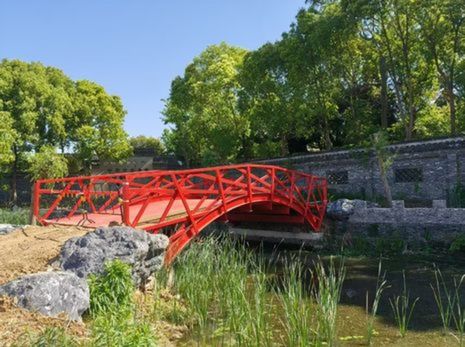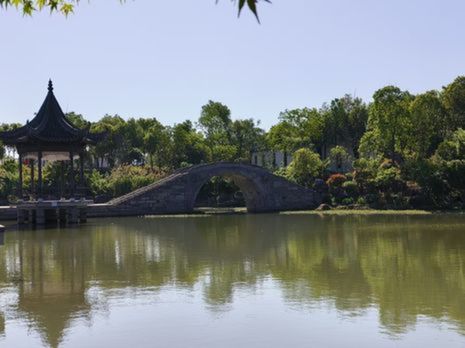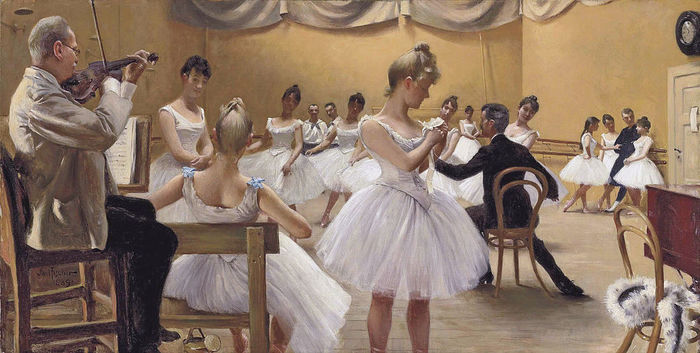Bridging the distance
Heather Irvine speaks to art collector Chen Jian on his reinterpretation of Queens’ College’s Mathematical Bridge

“This is about a love story,” comes the voice of Mr Chen, over spotty connection, from a garden in Yangzhou, China.
I am speaking to Chen Jian, an avid collector of historical Chinese art and architecture, and Liu Nanping, an artist, poet, and the Director of Yangzhou Chinese Paintings Academy. We have been discussing Mr Chen’s garden, which he calls the Chen Yuan (meaning Chen Garden). You can banish any images of rosebeds or neatly-trimmed hedges that might spring to mind; in his garden, Mr Chen cultivates stone and brick — relics forming a kind of cultural conservation site.
Chen made his wealth as an electronics merchant, selling his company to Suning, one of China’s leading retail service companies. In the last thirty years, he has been spending his money collecting artefacts across the country. As China set about modernising its infrastructure and economy, countless historical buildings — often whole villages — were dismantled to make way for motorways and factories. Chen would travel to these sites to buy pieces of the old architecture. He has preserved centuries of the country’s history in masterfully crafted gates, bridges, and friezes.
“The Mathematical Bridge at Queens’ College is a feat of ingenious engineering”
One of the garden’s most impressive relics is an eight hundred year-old Tiger’s Head bridge from the Southern Song dynasty (1127–1279), which he moved, brick by brick, and reconstructed. There is also a Ming dynasty (1368–1644) stone gateway, carved with phoenixes and qilins (deer-dragons of Chinese myth), and mounted with sculpted lions. Yet, his latest addition comes from the West — comes, as it happens, not far from where I sit — in the shape of one of Cambridge’s most iconic structures.
The Mathematical Bridge at Queens’ College is renowned as a feat of ingenious engineering as it harnesses the compression generated by gravity to hold its wooden beams together. Designed in 1748 by English architect William Etheridge, it is a classic silhouette in Cambridge’s landscape, and a must-see for the city’s many, many tourists. So how, then, is this bridge considered an artefact of Chinese culture?
The answer is: a love story.

In 1921, while studying at Cambridge, two young Chinese intellectuals met and fell in love. Their names were Xu Zhimo and Lin Huiyin. Both became important figures of China’s New Poetry movement — Xu would come to be seen as the father of modern Chinese poetry. Between them grew a deep intellectual and romantic love. But Xu was married. In 1922, he divorced his wife and followed Lin back to China. However, she had been promised to another leading intellectual, Liang Sicheng (the father of modern Chinese architecture, incidentally). Lin married Liang, and Xu’s lasting heartache produced what is perhaps China’s most famous modern poem: “Farewell Again to Cambridge”.
Written in 1928, the poem rings with the deep melancholy of the poet’s reminiscences. Certain lines are particularly imbued with the memories of Lin which the city preserves for Xu: “Those riverside golden willows / are brides in the sunset”. The poem is a key element of Cambridge’s popularity with Chinese visitors. King’s College’s Xu Zhimo Friendship Garden features a rock etched with its first and last lines.
“It is an emblem of the power of aesthetic and poetic emotion”
For Mr Chen, the Mathematical Bridge is a symbol of Cambridge, and, by extension, of this famous Chinese love story. For him, it is an emblem of the power of aesthetic and poetic emotion. This is why the Chen Garden’s bridge is not a replica, but a new interpretation. Though it matches the Mathematical Bridge in design and scale, it was built with aluminium and, most strikingly, painted in a bright shade of Chinese red. With these alterations, the Chen Garden’s “Cam-Bridge” is the physical manifestation of the Chinese cultural link with Cambridge.
“We refuse to replicate,” Chen repeats emphatically.
With Chen is Liu Nanping, who, upon seeing the new bridge in the Chen Garden, was inspired to write a poem of his own — a response to the feelings of love and grief Xu preserves in his poem. “The bridge evokes beautiful feelings,” Liu explains. “It hooks the tender feelings of everyone who knows the story.”
“Each person has their own story,” he continues. “The Chen Garden’s bridge has this creativity: it imbibes each person’s own associations.”
“It bridges the past, present, and future,” Chen adds. I see that “the past” refers to the love story between Xu and Lin, and that “the present” exists in its reinterpreted form, but I do not immediately understand its link to the future. “In humanity’s pursuit of beauty,” he explains, “there is always an extension into the future.”
The bridge — relocated, reinterpreted, and given a new life on the other side of the world — continues to spark new creative energy, proving its estimation as a symbol of poetic feeling. Chen believes that placing it in a site of Chinese art and culture forges a dialogue between the university and the garden.
“In the university setting, the bridge has a different symbolic meaning,” Chen explains. “At first, the Chinese went to Cambridge in pursuit of knowledge, in pursuit of learning. Now, we visit, too, chasing beauty – chasing love.” In the West, the bridge represents a story of mathematical innovation; in the East, a story of love and poetry.
“In Yangzhou, this story echoes,” says Chen.
Want to share your thoughts on this article? Send us a letter to letters@varsity.co.uk or by using this form
 News / Cambridge welcomes UK rejoining the Erasmus scheme20 December 2025
News / Cambridge welcomes UK rejoining the Erasmus scheme20 December 2025 News / CUP announces funding scheme for under-represented academics19 December 2025
News / CUP announces funding scheme for under-represented academics19 December 2025 News / News in Brief: humanoid chatbots, holiday specials, and harmonious scholarships21 December 2025
News / News in Brief: humanoid chatbots, holiday specials, and harmonious scholarships21 December 2025 News / SU reluctantly registers controversial women’s soc18 December 2025
News / SU reluctantly registers controversial women’s soc18 December 2025 News / King appoints Peterhouse chaplain to Westminster Abbey22 December 2025
News / King appoints Peterhouse chaplain to Westminster Abbey22 December 2025









